Appendix
Protocol for action in bullying situations – UNICEF
[ DISCLAIMER: This document has been automatically translated using Google Translate. ]
Download appendix[ DISCLAIMER: This document has been automatically translated using Google Translate. ]
Download appendix
[ DISCLAIMER: This document has been automatically translated using Google Translate. ]
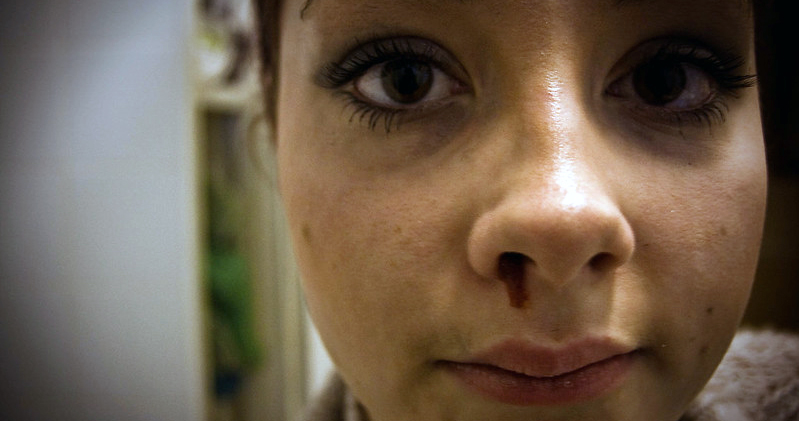
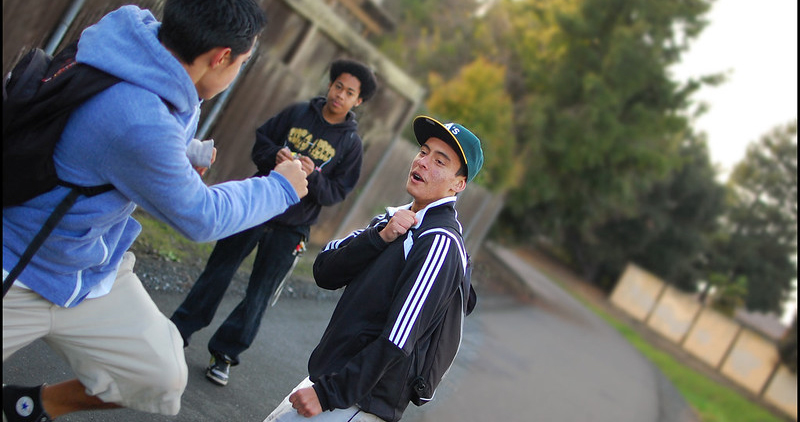
To increase the sense of immersion in Virtual Reality, you can include comments, questions or ideas in the session so the experience will seem more realistic to your patient.
Some examples could be:
“Imagine that these are your classmates with whom you are having problems” … “How does it feel to see them?” “What do you think they think of you?” “Which one do you feel most unhappy with and why?” “Which generates the most fear or anxiety?” “Which one do you trust or give you greater security?” “Do they make you nervous?” “What do they usually do when the teacher is away?”, Etc.
In turn, it is highly recommended to try to keep the patient in the same body position in which the protagonist of the scene is (in this case, sitting at the classroom desk).
Similarly, it may be useful to add any element of the scene or context where the events occur. In this case, offering the patient a pen or pencil and a notebook can help to make the immersion more effective and provide the child / adolescent with the sensations of the conflictive environment.
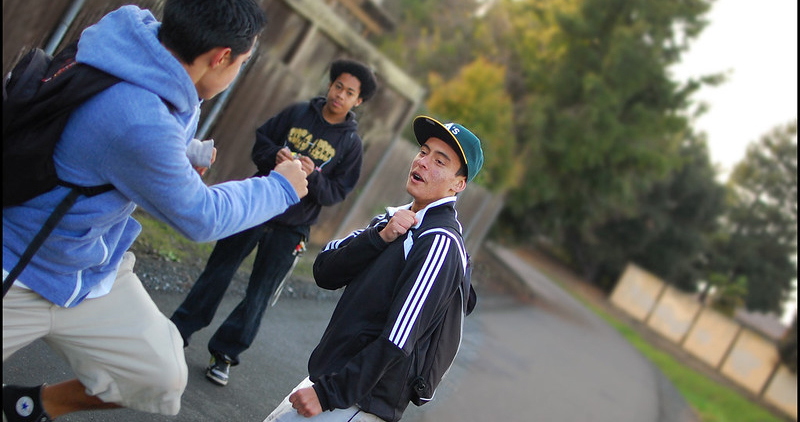
Siempre es interesante y positivo tratar de complementar la experiencia de Realidad Virtual con comentarios, preguntas o indicaciones para facilitar que el paciente pueda ponerse más fácilmente en situación y sienta una mayor inmersión en el entorno.
Algunos ejemplos podrían ser:
“Imagínate que estos son tus compañeros de clase con los cuales estás teniendo problemas”… “¿Qué sientes al verlos?” “¿Qué crees que piensan de ti?” “¿Con cuál te sientes más a disgusto y porque?” “¿Cuál te genera más miedo o ansiedad?” “¿En cuál confías o te da mayor seguridad?” “¿Te ponen nervioso?” “¿Qué suelen hacer cuándo no está el profesor?”, etc.
A su vez, es muy recomendable tratar de mantener al paciente en la misma posición corporal en la que se encuentra el sujeto protagonista de la escena (en este caso, sentado en el pupitre del aula).
Del mismo modo, puede ser útil añadir cualquier elemento propio de la escena o del contexto donde suceden los hechos. En este caso, ofrecer al paciente un bolígrafo o lápiz y una libreta puede ayudar a hacer más efectiva la inmersión y facilitarle al niño/adolescente las sensaciones propias del entorno conflictivo.

“All the information contained in this section is for guidance only. Psious environments are therapy supporting tools that must be used by the healthcare professional within an evaluation and intervention process designed according to the characteristics and needs of the user.
Also remember that you have the General Clinical Guide in which you have more information on how to adapt psychological intervention techniques (exposure, systematic desensitization, cognitive restructuring, chip economy…) to Psious environments.”
It is important to note that in this section we will only show and suggest some points to guide the intervention through the virtual environment of Psious to address bullying or bullying. The treatment must be adapted to the characteristics of each patient and the healthcare professional may adapt it according to their criteria. A good first orientation can be obtained in the Action protocol in situations of bullying – UNICEF .
As we have seen in the evaluation section, the treatment of cases of bullying usually takes place in 3 phases: evaluation , intervention and follow-up.
By using our environment it will be possible to bring the victim of bullying closer to a similar situation that helps us carry out the approach of the different phases of bullying treatment.
In this first phase we will confront our patient with the environment in order to evaluate his behavior in relation to the problem. During the course of the scene and once its execution is finished, we will try to collect relevant information about the case, through a semi-structured interview 2. We will therefore focus on knowing the patient’s profile. It is important to collect information both from the intrapersonal part (as I am), and from the interpersonal part (as they see me and I relate to others). In this way, once the initial exploration has been carried out, we will have more information to determine a personalized action plan.
In this second phase our objective of locating the patient in the environment will be to try to execute the action plan appropriate or training in relation to the evaluation phase. Therefore, we will provide the patient with those tools that help them solve psychopathological aspects that contribute to aggravating or maintaining the problem of bullying.
The following table summarizes groups different useful aspects to work in cases of bullying and the different techniques often applied:
| Psychopathological Aspects | Therapeutic Techniques |
|---|---|
| Self-esteem Deficit | Cognitive Restructuring |
| Anxiety | Diaphragmatic breathing / Relaxation (can leverage environments relaxation Psious) |
| Deficit problem solving | Training in problem solving / Training in self-instruction |
| Social skills / Assertiveness | Training in communication skills / debate / discussion / argumentation |
2 The relevant information to collect is detailed in section 2.2 .one.
It is important, once the intervention has been carried out, to schedule follow-up sessions after a period of time. In this way we can ensure the effectiveness of the intervention and detect possible aspects that may need to be reinforced again.
Below we show you a proposal for intervention with PSIOUS for victims and participants in situations of bullying.
The following proposal is made to evaluate coping styles in a school conflict situation.
| ITEM | ENVIRONMENT | CONFIGURATION | EVENT |
|---|---|---|---|
| Psychoeducation anxiety | What are emotions How do we feel emotions | ||
| Being alone in the hall, waiting for the teacher to arrive and start the exam | Institute, easy, just | ||
| Being with a few classmates in the hall before an exam and they seem very calm | Institute, easy, few people | ||
| Being doing an exam that is short in a classroom full of people | Anxiety before exams | Institute, easy, many people | many people Start exam |
| ITEM | ENVIRONMENT | CONFIGURATION | EVENT |
|---|---|---|---|
| Being with a few classmates in the hallway before an exam and they seem very calm | Anxiety exams | Institute, easy, many people | |
| Being in class and being approached by a classmate alone to rebuke | Bullying | Just | Begin |
| Identification emotional states (up to 12 years old) | Mindfulness kids: Summer | Exercises in Summer environment, especially Energy recharge and end of summer | Begin |
| Control of physiological activation: Breathing exercises | Relaxation Breathing Under the sea / Prairie | At the patient’s choice, adjust the frequency of comfortable breathing for the patient | Begin |
| ITEM | ENVIRONMENT | CONFIGURATION | EVENT |
|---|---|---|---|
| To be in class and to be approached by a single partner to reprimand | Bullying | Accompanied | Start |
| Focus Attention | Mindfulness kids: Winter | Introduction, home and lighthouse | Begin |
| Control of physiological activation: Breathing exercises | Relaxation Breathing Under the Sea / Meadow | At the patient’s choice, adjust the comfortable breathing rate for the patient. | Begin |
| ITEM | ENVIRONMENT | CONFIGURATION | EVENT |
|---|---|---|---|
| Being with a few classmates before an exam and they seem very calm | Anxiety exams | Institute, easy, many people | start |
| Training in Social Skills | Audience | Few people | Start, easy questions |
| Generation pleasant emotions | Mindfulness kids: Autumn | Introduction, Pinwheel | start |
| ITEM | ENVIRONMENT | CONFIGURATION | EVENT |
|---|---|---|---|
| Being with few peers in class before an exam and they seem very calm | Anxiety exams | Institute, difícill, many people | begin |
| Generation pleasant emotions | Mindfulness kids: Autumn | Introduction, Pinwheel and Projection joy and end of autumn | begin |
| ITEM | ENVIRONMENT | CONFIGURATION | EVENT |
|---|---|---|---|
| To be in class and to be approached by a companion to be shocked | Bullying | Accompanied | Begin |
| Training in social skills | Audience | Many people | Start, difficult questions |
| Generation Activation | Mindfulness kids: summer | Introduction, magic items , recharges energy, End of summer | beginning |
| ITEM | ENVIRONMENT | CONFIGURATION | EVENT |
|---|---|---|---|
| Being with a few classmates before an exam and they seem very calm | Anxiety exams | Institute, easy, many people | start |
| Generation Activation | Mindfulness kids: summer | Introduction, magic items, recharge energy, End of summer | start |
| control physiological arousal: breathing exercises | Relaxation breathing Under the sea / Meadow | a choice of the patient, adjust frequency comfortable breathing for the patient | start |
Remember that you have the clinical guide to inform you of therapeutic procedures with empirical evidence and how to adapt them to the intervention with the virtual environments of Psious.
[ DISCLAIMER: This document has been automatically translated using Google Translate. ]
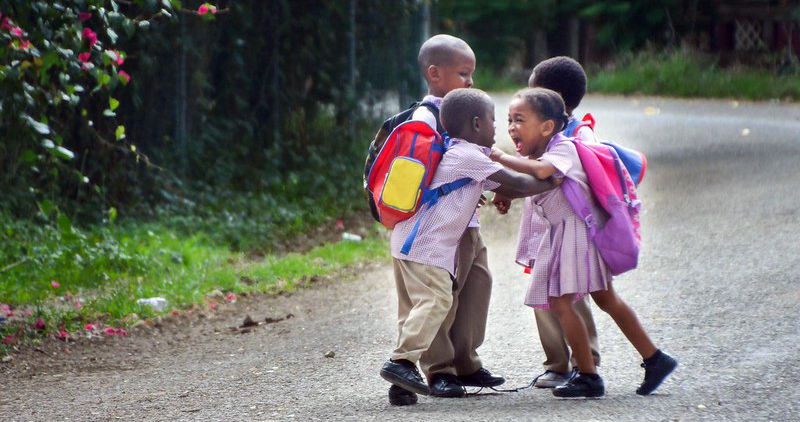
“Toda la información contenida en este apartado es de carácter orientativo. Los entornos de Psious son herramientas de apoyo terapéutico que deben ser utilizadas por el profesional de la salud dentro de un proceso de evaluación e intervención diseñado según las características y necesidades del usuario.
Recuerda además que dispones de la Guía Clínica General en la que tienes más información sobre cómo adaptar las técnicas de intervención psicológica (exposición, desensibilización sistemática, reestructuración cognitiva, economía de fichas…) a los entornos de Psious.”
Es importante remarcar que en este apartado únicamente mostraremos y sugerimos algunos puntos para guiar la intervención mediante el entorno virtual de Psious para el abordaje del acoso escolar o Bullying. El tratamiento debe ser adaptado a las características de cada paciente y el profesional de la salud podrá adaptarlo según su criterio. Una buena primera orientación puede obtenerse en Protocolo de actuación en situaciones de bullying – UNICEF
Tal como hemos visto en el apartado de evaluación, el tratamiento de los casos de bullying suele llevarse a cabo en 3 fases: evaluación, intervención y seguimiento.
Mediante el uso de nuestro entorno será posible acercar a la víctima del acoso escolar a una situación similar que nos ayude a llevar a cabo el abordaje de las diferentes fases de tratamiento del bullying.
En esta primera fase enfrentaremos a nuestro paciente al entorno con el objetivo de evaluar su conducta en relación al problema. Durante el transcurso de la escena y una vez finalizada su ejecución, trataremos de ir recogiendo información relevante sobre el caso, mediante una entrevista 2 semiestructurada. Nos centraremos pues en conocer el perfil del paciente. Es importante recabar información tanto de la parte intrapersonal (como soy yo), como de la interpersonal (como me ven y me relaciono con los demás). De este modo, una vez realizada la exploración inicial tendremos más información para determinar un plan de actuación personalizado.
En esta segunda fase nuestro objetivo de situar al paciente en el entorno será tratar de ejecutar el plan de actuación o entrenamiento adecuado en relación a la fase de evaluación. Por tanto, facilitaremos al paciente aquellas herramientas que le ayuden a solventar aspectos psicopatológicos que contribuyan a agravar o mantener el problema de acoso.
El siguiente cuadro resumen agrupa diferentes aspectos útiles a trabajar en casos de Bullying y las diferentes técnicas que se suelen aplicar:
| Aspectos psicopatológicos | Técnicas terapéuticas |
|---|---|
| Déficit en la autoestima | Reestructuración cognitiva |
| Ansiedad | Respiración diafragmática / Relajación (Podemos aprovechar los entornos de relajación de Psious) |
| Déficit en la resolución de problemas | Entrenamiento en resolución de problemas / Entrenamiento en autoinstrucciones |
| Habilidades sociales/asertividad | Entrenamiento en habilidades de comunicación / debate / discusión / argumentación |
2 La información relevante a recoger se encuentra detallada en el apartado 2.2.1.
Es importante una vez realizada la intervención programar unas sesiones de seguimiento al cabo de un periodo de tiempo. De esta manera podremos asegurarnos de la efectividad de la intervención y detectar posibles aspectos que puedan ser necesario reforzar de nuevo.
A continuación os mostramos una propuesta de intervención con PSIOUS para víctimas y participantes en situaciones de acoso escolar.
La siguiente propuesta está planteada para evaluar estilos de afrontamiento en una situación de conflicto escolar.
| ITEM | ENTORNO | CONFIGURACIÓN | EVENTO |
|---|---|---|---|
| Psicoeducación ansiedad | Qué son las emociones Cómo sentimos las emociones | ||
| Estar solo en el pasillo, esperando a que llegue el profesor y de comienzo al examen | Instituto, fácil, sólo | ||
| Estar con unos cuantos compañeros en el pasillo antes de un examen y que parezcan muy tranquilos | Instituto, fácil, poca gente | ||
| Estar haciendo un examen que es corto en un aula llena de gente | Ansiedad ante exámenes | Instituto, fácil, mucha gente | mucha gente Empezar examen |
| ITEM | ENTORNO | CONFIGURACIÓN | EVENTO |
|---|---|---|---|
| Estar con unos cuantos compañeros en el pasillo antes de un examen y que parezcan muy tranquilos | Ansiedad examenes | Instituto, fácil, mucha gente | |
| Estar en clase y que se acerque un compañero solo a increpar | Bullying | Solo | Comenzar |
| Identificación estados emocionales (hasta-12 años) | Mindfulness kids: Verano | Ejercicios en entorno Verano, en especial Recarga energía y final del verano | Comenzar |
| Control de la activación fisiológica: Ejercicios de respiración | Relajación Respiración Bajo el mar/ Pradera | A elección del paciente, ajustar frecuencia de respiración cómoda para el paciente | Comenzar |
| ITEM | ENTORNO | CONFIGURACIÓN | EVENTO |
|---|---|---|---|
| Estar en clase y que se acerque un compañero solo a increpar | Bullying | acompañado | Comenzar |
| Focalización Atención | Mindfulness kids: Invierno | Introducción, casa y faro | Comenzar |
| Control de la activación fisiológica: Ejercicios de respiración | Relajación Respiración Bajo el mar/ Pradera | A elección del paciente, ajustar frecuencia de respiración cómoda para el paciente | Comenzar |
| ITEM | ENTORNO | CONFIGURACIÓN | EVENTO |
|---|---|---|---|
| Estar con unos cuantos compañeros en clase antes de un examen y que parezcan muy tranquilos | Ansiedad examenes | Instituto, fácil, mucha gente | comenzar |
| Entrenamiento en Habilidades sociales | Audiencia | Poca gente | Comenzar, preguntas fàciles |
| Generación emociones agradables | Mindfulness kids: Otoño | Introducción, Molinillo | comenzar |
| ITEM | ENTORNO | CONFIGURACIÓN | EVENTO |
|---|---|---|---|
| Estar con unos cuantos compañeros en clase antes de un examen y que parezcan muy tranquilos | Ansiedad examenes | Instituto, difícil, mucha gente | comenzar |
| Generación emociones agradables | Mindfulness kids: Otoño | Introducción, Molinillo y Proyección alegría y final otoño | comenzar |
| ITEM | ENTORNO | CONFIGURACIÓN | EVENTO |
|---|---|---|---|
| Estar en clase y que se acerque un compañero acompañado a increpar | Bullying | acompañado | Comenzar |
| Entrenamiento en Habilidades sociales | Audiencia | Mucha gente | Comenzar, preguntas difíciles |
| Generación Activación | Mindfulness kids: verano | Introducción, objetos mágicos, recarga energía, Final del verano | comenzar |
| ITEM | ENTORNO | CONFIGURACIÓN | EVENTO |
|---|---|---|---|
| Estar con unos cuantos compañeros en clase antes de un examen y que parezcan muy tranquilos | Ansiedad examenes | Instituto, fácil, mucha gente | comenzar |
| Generación Activación | Mindfulness kids: verano | Introducción, objetos mágicos, recarga energía, Final del verano | comenzar |
| Control de la activación fisiológica: Ejercicios de respiración | Relajación Respiración Bajo el mar/ Pradera | A elección del paciente, ajustar frecuencia de respiración cómoda para el paciente | Comenzar |
Recuerda que dispones de la guía clínica para informarte de los procedimientos terapéuticos con evidencia empírica y de cómo adaptarlos a la intervención con los entornos virtuales de Psious.
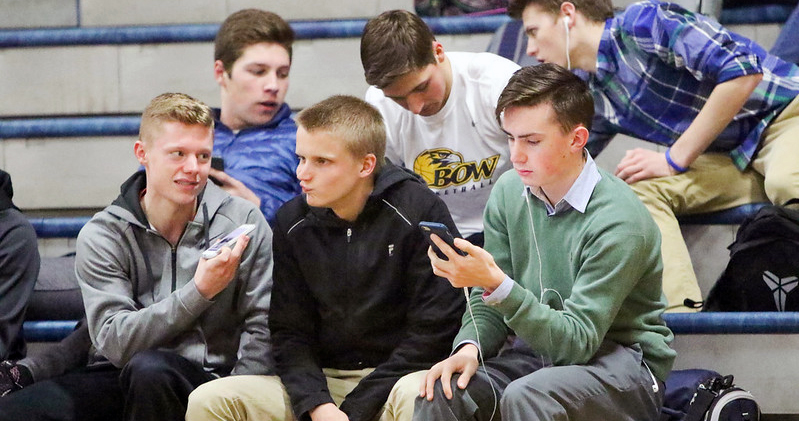
“All the information contained in this section is for guidance only. Psious environments are therapy supporting tools that must be used by the healthcare professional within an evaluation and intervention process designed according to the characteristics and needs of the user.
Also remember that you have the General Clinical Guide in which you have more information on how to adapt psychological intervention techniques (exposure, systematic desensitization, cognitive restructuring, chip economy…) to Psious environments.”
The psychological evaluation / intervention protocol for dealing with bullying cases is usually divided into three phases.
A first evaluation phase, where information is collected on the psychological profile of the affected person (levels of self-esteem, anxiety, communication skills, problem solving skills, educational deficits of the parents, etc.) and information on the case of bullying. (type of assaults, frequency, place of occurrence, subjective assessment of the severity of the assaults, feeling of security and information about the assailants).
A second intervention phase, whose objective is usually focused on improving social skills and the degree of assertiveness (equipping the victim with effective strategies to improve their communication skills, increase their self-esteem, learn to protect and defend their rights, as well as express effectively and socially acceptable their emotions and desires to promote integration into the group).
And finally a post-intervention follow-up phase.
EVALUATION OBJECTIVES
Individual factors associated with the victim, such as: Low self-esteem; insufficient social skills to relate to other classmates; visible physical or cultural traits, different from those of the majority (ethnic, racial and cultural minorities); disability; anxiety disorders or other psychopathological disorders: mood disorders (depressive disorder), behavior disorders (attention deficit hyperactivity disorder, challenging disorder), adaptive disorders (with mixed alteration of emotions and behavior).
Family-related factors, such as: Inappropriate, authoritative, or negligent parenting practices; education on the margins of society; restricted family life forms (social, religious or cultural group communities); dysfunctional families; high pressure, demand and / or little objective expectations; little family communication.
Factors associated with the school, such as: Low participation in group activities; little communication between students and teachers; absence of reference authority figure in the school, profile of “good boy / girl” who never gives or gets into trouble; threats such as imposing silence on the victim on the part of the aggressor, on the part of other students, or in exceptional cases on the part of a teacher or the school itself, can lead to general behavior of self-deprivation of expression in the school environment, poor relationships with peers …
Factors associated with the case of bullying, such as: Type of assaults (insults, physical assaults, comments, teasing…); place / is where these attacks occur (patio, classroom, bathrooms…); frequency of assaults; subjective assessment of the severity of the attacks; feeling of security (possible help) and information about the aggressors (number of people against them).
Bullying and victimization investigations [Schwartz, 2000] have identified four different types of children:
Childhood Post Traumatic Stress Syndrome explains that bullied children / teens develop a sense of impending danger, pervasive restlessness or nervousness, and a recurring, nonspecific type of anxiety with the permanent feeling that something terrible is about to happen to them imminently. them or their loved ones.
The harassed child / adolescent develops a hyper-reaction to frustration, or to environmental stimuli such as a strong light, a door that closes suddenly, loud noises, etc.
Post-traumatic stress syndrome in children generates extraordinary and intense irritability that the victim of bullying immediately projects on his family and colleagues.
It also causes a type of hypervigilance that consists of enormous mistrust and suspicion of the intentions of others.
Among the tests that can be used to assess post-traumatic harm among victims of bullying in childhood and youth are:
[ DISCLAIMER: This document has been automatically translated using Google Translate. ]
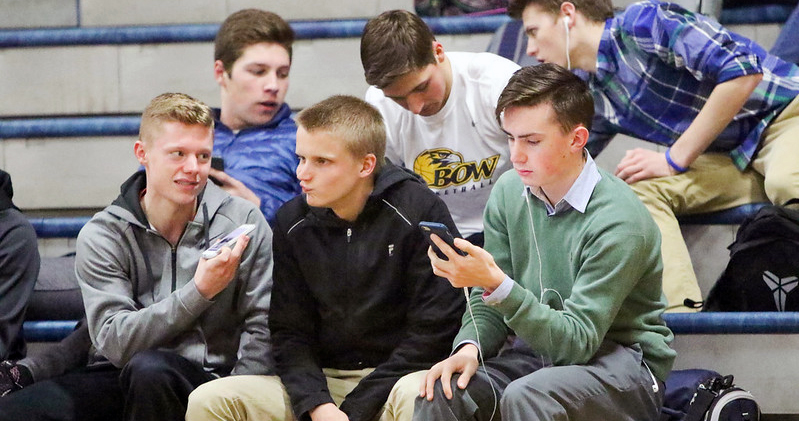
“Toda la información contenida en este apartado es de carácter orientativo. Los entornos de Psious son herramientas de apoyo terapéutico que deben ser utilizadas por el profesional de la salud dentro de un proceso de evaluación e intervención diseñado según las características y necesidades del usuario.
Recuerda además que dispones de la Guía Clínica General en la que tienes más información sobre cómo adaptar las técnicas de intervención psicológica (exposición, desensibilización sistemática, reestructuración cognitiva, economía de fichas…) a los entornos de Psious.”
El protocolo de evaluación/intervención psicológica para tratar los casos de bullying suele dividirse en tres fases.
Una primera fase de evaluación, donde se recoge información sobre el perfil psicológico del afectado (niveles de autoestima, ansiedad, habilidades de comunicación, habilidades en la resolución de problemas, déficits educativos de los padres, etc.) e información sobre el caso de bullying (tipo de agresiones, frecuencia, lugar de ocurrencia, valoración subjetiva de la gravedad de las agresiones, sensación de seguridad e información sobre los agresores).
Una segunda fase de intervención cuyo objetivo suele centrarse en mejorar las habilidades sociales y el grado de asertividad (dotar a la víctima de estrategias efectivas para mejorar sus habilidades de comunicación, aumentar su autoestima, aprender a proteger y defender sus derechos, así como expresar de forma eficaz y socialmente aceptable sus emociones y deseos para promover la integración en el grupo).
Y finalmente una fase de seguimiento post-intervención.
OBJETIVOS DE EVALUACIÓN
Factores individuales asociados a la víctima, tales como: Baja autoestima; insuficientes habilidades sociales para relacionarse con otros compañeros; rasgos físicos o culturales visibles, distintos a los de la mayoría (minorías étnicas, raciales y culturales); discapacidad; trastornos de ansiedad u otros trastornos psicopatológicos: trastornos del estado de ánimo (trastorno depresivo), trastornos de conducta (trastorno por déficit de atención con hiperactividad, trastorno desafiante), trastornos adaptativos (con alteración mixta de las emociones y el comportamiento).
Factores asociados a la familia, tales como: Prácticas de crianza inadecuadas, autoritarias o negligentes; educación al margen de la sociedad; formas de vida familiar restringidas (comunidades grupales sociales, religiosas o culturales); familias disfuncionales; elevada presión, exigencia y/o expectativas poco objetivas; poca comunicación familiar.
Factores asociados a la escuela, tales como: Escasa participación en actividades de grupo; poca comunicación entre alumnado y profesorado; ausencia de figura de autoridad de referencia en el centro escolar, perfil de “chico/a bueno/a” que nunca da ni se mete en problemas; amenazas tales como imponer silencio a la víctima por parte del agresor, por parte de otros alumnos, o en casos excepcionales por parte de algún profesor o el propio centro, puede desembocar en una conducta general de auto-privación de expresión en el entorno escolar, relaciones pobres con sus compañeros…
Factores asociados al caso de bullying, tales como: Tipo de agresiones (insultos, agresiones físicas, comentarios, burlas…); lugar/es donde ocurren esas agresiones (patio, aula, baños…); frecuencia de las agresiones; valoración subjetiva de la gravedad de las agresiones; sensación de seguridad (posibles ayudas) e información sobre los agresores (número de personas en su contra).
Las investigaciones de intimidación y victimización [Schwartz, 2000] han identificado cuatro tipos distintos de niños:
El síndrome de estrés postraumático infantil explica que los niños/adolescentes acosados desarrollen una sensación de peligro inminente, una inquietud pervasiva o nerviosismo, y un tipo de ansiedad recurrente e inespecífica con la sensación permanente de que algo terrible les va a ocurrir de manera inminente a ellos o a sus seres queridos.
El niño/adolescente acosado desarrolla una hiperreacción a la frustración, o ante estímulos ambientales como son una luz fuerte, una puerta que se cierra repentinamente, ruidos fuertes etc…
El síndrome de estrés postraumático infantil genera una extraordinaria e intensa irritabilidad que la víctima de acoso proyecta de manera inmediata sobre su familia y compañeros.
Asimismo provoca un tipo de hipervigilancia que consiste en una enorme desconfianza y suspicacia hacia las intenciones de los demás.
Entre las pruebas que se pueden usar para evaluar los daños postraumáticos entre las víctimas de acoso escolar en la edad infanto-juvenil están las siguientes: